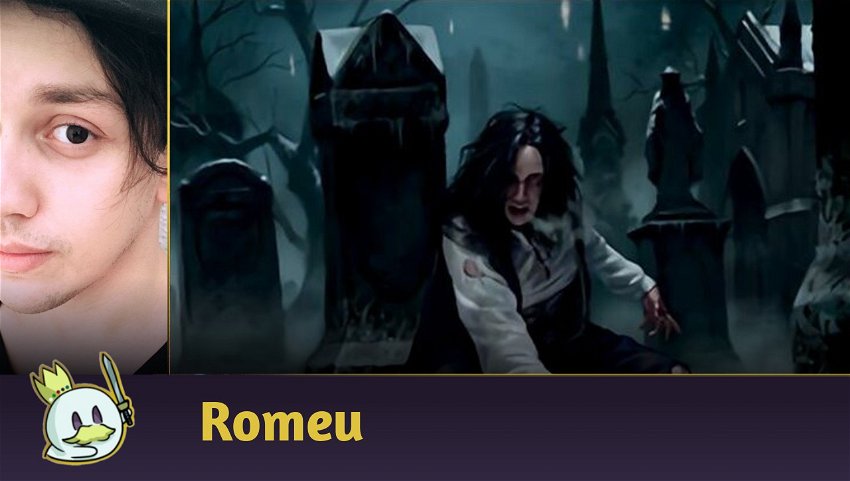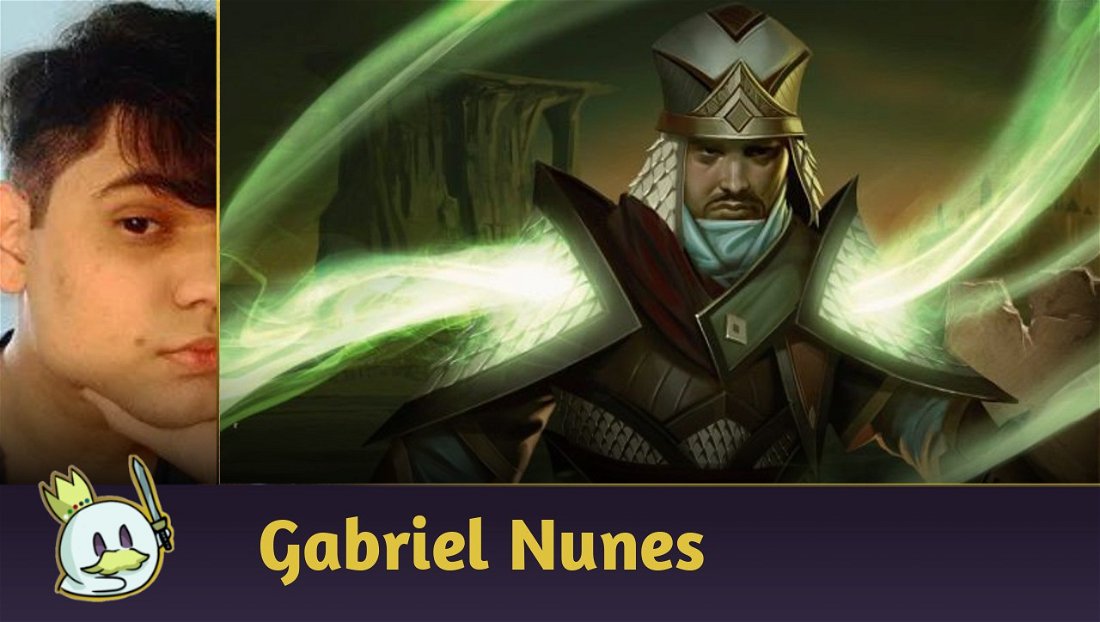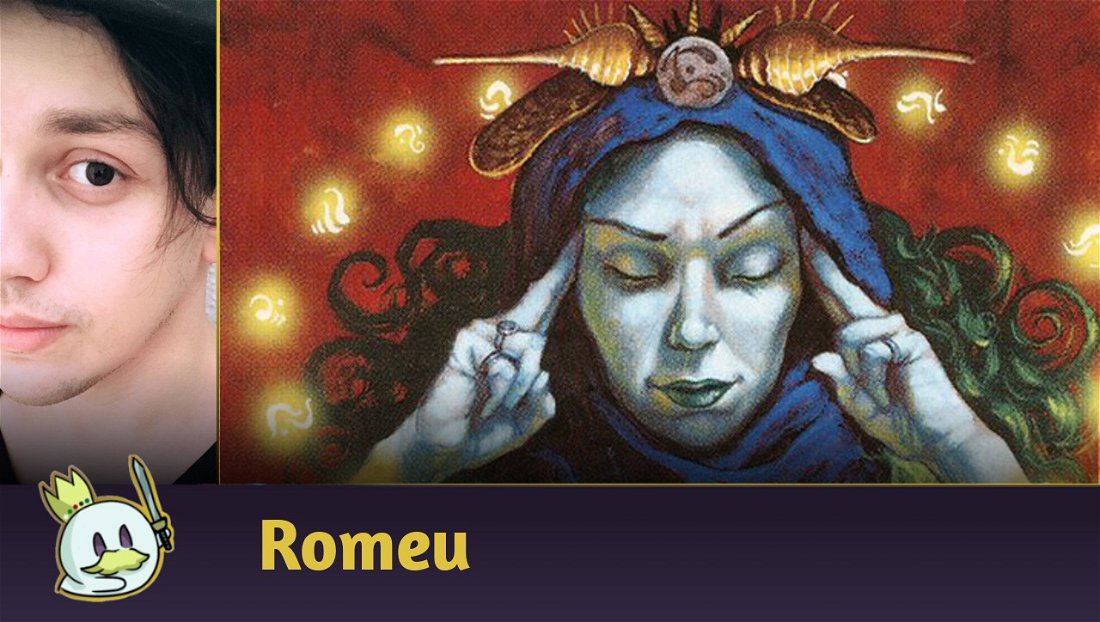On last week's Monday, Wizards of the Coast announced bans for Pauper, Modern, and Pioneer, with Lurrus of the Dream-Den being banned from the format for the risk that each new release could contribute to the deckbuilding concession created by the Companion to be more rewarding, leading towards a huge Metagame shift.

Honestly, the banning of Magic's most famous Companion came as a huge surprise to the community as, despite it being the most played creature in the mechanic, Lurrus decks weren't specifically dominating the Metagame, but, as mentioned in the announcement, her departure is a preventive action, as an anticipation of something that will eventually happen.
Ad
Unfortunately, there are numerous decks that lose heavily on this ban: from Azorius Ensoul to Rakdos Anvil, from Boros Burn to Orzhov Auras, and many of these archetypes provided a significant advantage by playing “under” others, or by being able to prolong the game even with a significantly low curve, thanks to the interactions that Lurrus made possible, especially with Kolaghan's Command — and it seems strange to me that we talk about “preemptive bans” when we're still in a format where Treasure Cruise and Dig Through Time are legal, two cards that will also become more powerful as new cards come out in upcoming sets, as was the case with Consider and Expressive Iteration, which boosted the rise of archetypes like Izzet Phoenix or the Jeskai Ascendancy lists, and it's likely that we'll eventually get bans on other cards that fall into that same category, like Delve Spells.
That said, without the presence of the best Companion in the format, some cards can benefit significantly by now gaining space to appear in their respective archetypes and strategies, where before they didn't have as much space due to the feline's restriction.
Cards with cost reduction

Permanents that have a malleable cost become much more useful for Midrange decks without a Companion forcing all of them to reduce mana costs as they can be cast for one or two mana.
We could observe, a few months ago, some Rakdos Blood lists running Herald of Anguish with tokens produced by Voldaren Epicure and Bloodtithe Harvester to reduce its cost and offer artifacts that can sacrificed for its ability, and I can definitely imagine some lists making good use of a 5/5 Flying with built-in removal and disruption.
Cards like Bedlam Reveler used to be great for refilling the hand in aggressive red decks with many spells, such as Mono Red Prowess in Modern, or even some older variants of Rakdos Pyromancer.
Tasigur, the Golden Fang is still a powerful value engine that can also be cast quickly and very cheaply, with a body that also provides a relevant clock over the course of a game.
Value-based Planeswalkers

Planeswalkers are powerful value engines that had their gameplay limited due to Lurrus' cost constraint, and can now become the primary means of gaining recurring card advantage on Pioneer, with some lists from this weekend's Challenges already taking advantage of walkers like Sorin the Mirthless in Black Midrange, or Chandra, Dressed to Kill in Red-Based Aggro.
We've also seen other Planeswalkers like The Wandering Emperor appearing on occasional lists outside the Control category, or Chandra, Torch of Defiance in various Midrange lists, and I wouldn't be surprised if we find Tempo archetypes in the future running Kaito Shizuki.
Ad
Other Companions

With a free Sideboard slot, how many of the decks that without Lurrus will be able to turn to another Companion if needed, and among them, which ones could really benefit from including them?
Jegantha, the Wellspring and Obosh, the Preypiercer are the ones that really stand out in this category, as Jegantha requires a relatively small deckbuilding concession (and an extra 5/5 in your hand at late game can make a difference), and we will likely see some Oni-Cult Anvil lists running it now, while Obosh may have decks built to play around its restrictions without too much difficulty, as well as offering a similar effect as Torbran, Thane of Red Fell.
Bonecrusher Giant

Bonecrusher Giant is one of the most efficient creatures for Aggro or Midrange in Pioneer currently, as it mixes an efficient clock with a low cost, has built-in protection and still works as a removal and burn, all on the same card.
Without Lurrus, Bonecrusher Giant gains space to appear not only in Rakdos Midrange, as it already existed in lists that gave up the Companion to have access to other high-value permanents, such as Kalitas, Traitor of Ghet and Graveyard Trespasser, but can also appear in Boros Burn or Mono-Red Aggro, which can also include, if needed, a new Companion: Obosh, the Preypiercer.
Liliana, the Last Hope

Even with an exclusive section for Planeswalkers in this article, I think Liliana, the Last Hope is the one that benefits the most from Lurrus' absence and therefore deserves a mention of her own in this article.
Although her removal ability is not as efficient as in Modern, where there are critical targets like Esper Sentinel or Ragavan, Nimble Pilferer, Liliana can handle small creatures without much difficulty, while becoming the best recursive effect of the format now, in addition to also operating as a finisher in long matchups, generating a lot of value for a relatively low cost, and still solving some occasional problematic creatures.
Mayhem Devil

In the past, there were three patterns for the Sacrifice archetypes: The Jund versions with Collected Company and Bolas's Citadel that sought to perform a combo-kill with Mayhem Devil, the most Midrange-oriented version which took advantage of the inclusion of Korvold, Fae-Cursed King to generate a lot of long-term value, and the recent Rakdos versions with Oni-Cult Anvil and Experimental Synthesizer that sought to generate a plenty of value by reusing your cards with Lurrus of the Dream-Den.
Now, without Lurrus, all Sacrifice decks can run Mayhem Devil as a powerful clock that interacts with the rest of the engine without having to give up one of the most powerful cards that existed in the format, and it's important to note that the Ravnica Allegiance devil also works very well with the sacrifice of artifact tokens, making room for some variant that seeks to take advantage of the mix of Blood Tokens' creators base alongside Oni-Cult Anvil and the classic Cat-Oven combo
Ad
Skyclave Apparition

Skyclave Apparition is a powerful answer to the most diverse threats in the format and an important flexible maindeck or sideboard piece for many archetypes, and can have its playability expanded to the sideboard of many white decks now that Lurrus no longer restricts mana costs.
Among the archetypes that can run it now, I can imagine that decks such as Auras or Boros Heroic are the most appropriate, as it also offers a body that can be protected and/or enchanted to establish significant pressure against the opponent's life total.
Graveyard Trespasser

Graveyard Trespasser is one of the most powerful pieces of graveyard hate released recently, and it can make a huge difference as a powerful and efficient means of punctually countering Izzet Phoenix with a threat that needs to be answered at any cost, and the lack of the restriction generated by the banned Companion means that other Black-Based Midranges can play it more frequently between maindeck and sideboard.
One point that needs to be considered, however, is that while the Midnight Hunt creature is still a great match against Izzet Phoenix and other lists that resorts to Delve Spells, Parhelion II or Kroxa, Titan of Death's Hunger, it was also an important maindeck piece to face other Lurrus of the Dream-Den decks, and it is possible that the current Metagame landscape as it presents itself makes Graveyard Trespasser no longer needed.
Fable of the Mirror-Breaker

Fable of the Mirror-Breaker is one of those cards that nobody paid much attention to when it came out merely because there was no reason to play with a three mana enchantment that would take many turns to do something for a relatively high cost, but now, it's possible that the Kamigawa: Neon Dynasty saga could have more space in the Metagame because it does a lot over the course of three turns, like creating a body to attack and block, filter your own hand, and finally transform into a creature that can create recurring copies of any other threat you already have in play, being significantly powerful alongside Bloodthirsty Adversary or Tainted Adversary, as we could even see during the Neon Dynasty Championship this weekend.
Conclusion
That's all for today.
At a first look at the first results of this weekend's Challenges, I can't say that the initial results of taking Lurrus of the Dream-Den out of Pioneer really pleases me, and its absence has definitely altered the Metagame to the point that some strategies seem to have become significantly worse due to an almost preemptive ban, while other archetypes already well established and with explosive and less interactive game plan seem to be growing again in the Metagame.
However, we are still in the first week, and we need to give some time before evaluating Pioneer's state, including giving a few weeks or even a few months for the most affected decks to be able to restructure and, perhaps, become strong competitors.
Ad
Until then, the best we can do today is watch the results, wait and see what happens in the coming weeks.
Thanks for reading!








— Comentarios0
Se el primero en comentar